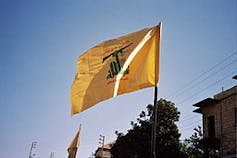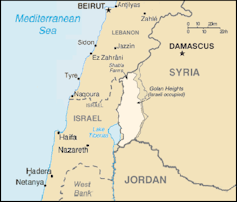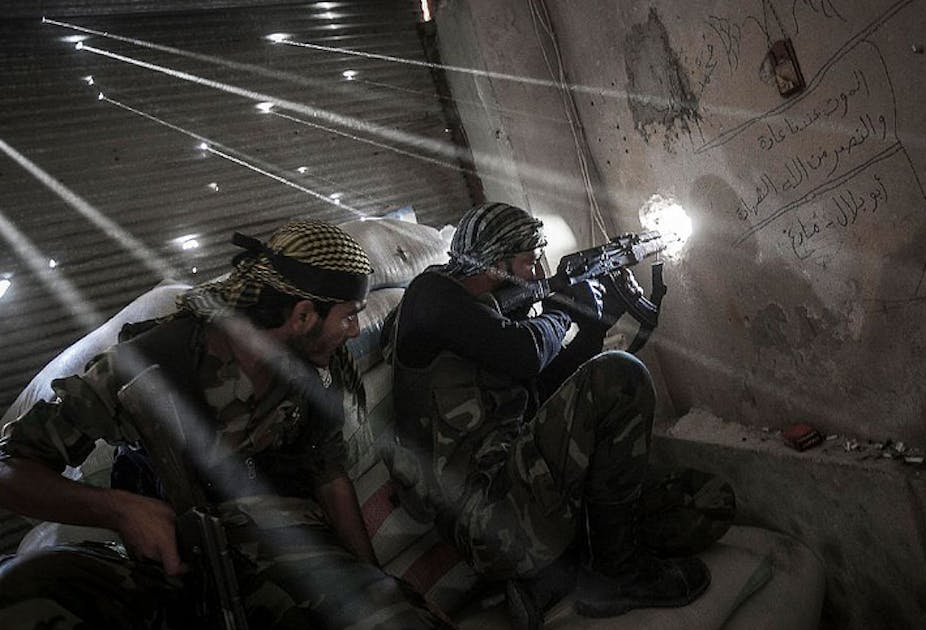The promise by Syrian rebel leader Selim Idriss this week that “we are allowed to fight Hezbollah fighters inside [Lebanese] territory” was a chilling intimation of what may lie ahead for the region.
What started in Syria two years ago in March 2011 as a protest movement in the wake of similar events in Tunisia, Egypt, Libya, Yemen and Bahrain quickly turned into the most protracted and bloody civil war since the Balkans in the 1990s. Around 80,000 people have been killed and more than four million displaced inside Syria. A further 1.5 million refugees have spilled into in neighbouring countries, especially Lebanon, Jordan, Iraq and Turkey.

These numbers, which continue to increase on a daily basis, are but one indication of the intensity and regional spread of the Syrian civil war. Over the past few days, headlines have focused on the role of Hezbollah fighters in the retaking of Qusair by regime forces and the clashes between Syrian rebels and Hezbollah fighters inside Lebanon.
But outside support for the regime does not start or stop with Hezbollah. There is long-standing credible evidence of Iranian involvement in support of the Assad regime, while Russia, too, has remained a steadfast ally and supporter, crucially blocking more decisive UN action, along with China.
Rebel wrangling muddies waters
The picture gets more complex when it comes to support for the rebels. Not only are anti-regime forces far from united on anything but their opposition to Assad, but these divisions reflect, and are in part exacerbated by, a similar lack of unity among those in the international community seeking an end to the Syrian civil war by deposing of Assad.

An additional factor that has contributed to growing unease and wrangling among the rebel supporters are the seemingly ever increasing radical Islamist tendencies in the rebel camp inside Syria and the fact that one of the main, and most successful fighting factions, Jabhra al-Nusra draws in a large number of foreign fighters and has close links to al-Qaeda in Iraq. Tensions among Gulf states, within the EU and among Western powers in favour of or opposed to arming Syrian rebels have been less than helpful in countering the much more effective support, so far, that Assad has received.
While outside support for the regime and the opposition alike has arguably prolonged and intensified the fighting inside Syria, it has also generated “blow-back” outside the country. Turkey, one of the major regional opponents of Assad, has felt the direct violent consequences of the increasing spill-over in a bombing in the city of Reyhanli last month, while Jordan has seen violence in Syrian refugee camps. Horrific as they are in themselves, this dimension of the regional spill-over of the Syrian civil war is limited and more easily containable.
A regional Sunni-Shia civil war in the making?
The more worrying and increasingly real danger is that of escalating sectarian tensions between Sunni and Shia across the Middle East. The Lebanese city of Tripoli has experienced violent confrontations between Sunni and Shia supporting different factions in the Syrian civil war for over a year. Sunni-Shia tensions in Lebanon are of course nothing new, but their recent violent intensity is clearly connected to the war in neighbouring Syria.
In Iraq, too, Sunni-Shia relations have taken a significant turn for the worse with daily levels of violence unseen for the past six years, while tensions in Bahrain remain high. While it is debatable to which extent either of these issues is directly connected to the civil war in Syria, there is clearly a trend that points to a region-wide violent escalation of sectarianism.
Where this is relevant to Syria is again in relation to the involvement of outsiders in the unfolding tragedy there. Sunni-Shia tensions are intrinsically linked to a long-standing power struggle between Iran and Saudi Arabia over regional and religious dominance.

Sectarian lines are more blurred when it comes to the wider conflict in the Middle East that pits Israel and its supporters against Arabs and Iran, and Israeli interests and involvement in the Syrian civil war potentially complicate the matter further. A desperate Assad may directly confront Israel in a gamble to unite Muslims behind his regime, while an opposition victory, given the growing influence of radical Islamist fighters and ideologues may not bode well for stability along the Golan Heights.
A final dimension worth noting is the Kurdish “question”. Kurds, the world’s largest stateless nation, live straddled predominantly across Turkey, Iraq, Syria and Iran. All of these countries have concerns about Kurdish national aspirations and have a history of using Kurdish factions as proxy fighters to undermine each other. Kurds in Iraq, in contrast, have demonstrated a keen ability to exploit regional disarray and build a formidable power base in the north of the country, which in part also acts as a counter-weight to the Shia-led government in Baghdad and its Iranian backers.
The significance of Syria, from a regional perspective and apart from the worsening humanitarian crisis, is that the intensely bloody conflict there may be a sign of what the region as a whole may yet experience. Syria is a likely catalyst for such a regional escalation and a definite battle field for the proxy wars already happening.

